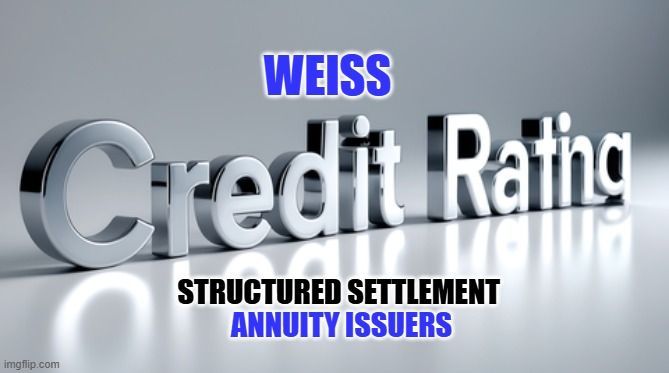What is a Structured Settlement Lock-in?
How Lock-ins Work and Benefit The Process for All

Is prudent diversification of a large structured settlement a thrilling exercise for structured settlement planners these days, or is more like spinning plates on sticks while balancing by one foot on a ball? Perhaps a little of both!
What is a Structured Settlement Lock in?
A structured settlement lock-in means that the structured settlement annuity issuer will guarantee the cost of a specific structued settlementg benefit stream (or streams), in exchange for the "quid pro quo" of a commitment to accept or purchase. The guarantee could be a week or, even a year.
A structured settlement lock-in is a critically important tool available to those who place structured settlement annuities such as structured settlement brokers, settlement consultants, settlement professionals and settlement planners and clients they serve. A structured settlement lock-in may offer critical benefits to claimants, plaintiffs, defendants and insurers alike at the time of case resolution. It's important to know what a lock-in is, how it can help and its limitations. Let's get started!
What Do You Need to Know About Structured Settlement Lock Ins?
It is important to understand that you are locking in a benefit stream and the internal rate of return derived from a payment of a premium by a specific date. The premium will produce income and/or lump sum annuity payments at times and amounts to be specified in the settlement agreement.
Reasons Timing of Structured Settlement Premium Funding May Vary
- By who is funding the structured settlement ("the payor");
- The statutory requirements of the jurisdiction as to timing of payment (e.g in New York, a defendant usually has 21 days to pay from the time he/she/it has been delivered the release of liability;
- The nature and business practice of the payor (some stretch it out to the last possible day, others pay very quickly, or will even pre-fund the structured settlement prior to receiving a release);
- Whether Court approval of the settlement, or approval of the plan of distribution of the settlement proceeds, is required before releases can be executed;
- Whether the payor is a government entity that has special funding consideration as to timing of payments;
- Whether the payor is a state insurance guaranty or liquidation fund or insolvency scheme of arrangement;
- Anything that may be stipulated by and between the parties
Where Are The Challenges for Structured Settlement Premium Funding?
- Cases involving municipal entities which require a referendum to approve a settlement before releasing funds
- Cases involving Probate or Surrogate Court approval
- Logjams in wrongful death settlements involving multiple judge/administrator combinations Public Adminstrator, Trial Court, Probate/Surrogate
- Cases involving a run off, guaranty association, liquidation bureau or catastrophic loss fund, such as the New York Liquidation Bureau (which under the best of circumstances wants 9 months from the date all documents are in) or the Pennsylvania Cat Fund ( once a year funding)
- Notwithstanding any of the above, cases one or more insurers, or layers of insurers for the Defendants where there is a need for funding delayed beyond 90 days
- Nothiwithstanding any of the above, when there is a desire to diversify between multiple annuity issuers which have different maximum lockin periods
- In a downward interest rate environment lock ins are critical as an interim interest rate shift could have a devastating effect on the yield per settlement dollar. In an upward interest rate environment some could make an argument to speculate on interest rates. Who wants to be on the tail end of it if you are wrong?
Prefunding the structure is the simplest solution.
The "date slide" method is another option
In such cases the settlement documents provide an agreement by the parties for each of the structured settlement payment dates tobe moved an equal number of days between the anticipated (locked in) funding date and the actual funding date, if earlier or later. This is one way to preserve the benefit amounts so that Court submissions can be made and that judges can view the exact benefits that the plaintiff is due to receive,
Those carriers who charge lock in fees muck up the works a bit, because it means there cannot be an exact day for day date slide. In my opinion, it would be better for the carriers to instead provide seamless pricing. One forward thinking structured annuity company, Pacific Life, waives lock in fees for 6 months.
Beware alternatives that could fail the IRS "benefits and burdens" test and possibly, needlessly exposing clients to tax peril.
Apparently some are putting so-called "recalibration clauses" into settlement documents, which give a judge examples "of what the benefits could be" with the caveat that the exact benefits will be calculated after court approval, or at some later date. According to one tax lawyer this author spoke to the IRS could focus on who bears the benefits and burdens of the transaction (the increase or decrease in rate, the extra lock in fees) and determine that the bearer owns the property. This is equally problematic for both plaintiffs and defendants. For defendants, the assignment company could unwind the assignment and for the plaintiff they may not achieve their financial objectives.
Thoughts Concerning Ways to Improve the Process
- Life insurers creating seamless pricing that has minimum of 6 months without lock in fees.
- Standardizing "date slide" contract language that is generally acceptable across the industry. The date slide language should recognize both early funding and late funding. If funded 10 days early, payment dates should be 10 days earlier, unless payments would be scheduled to arrive prior to a payee reaching the age of majority. If funded 10 days late then each payment date is 10 days later than scheduled.
- Minimize or eliminate need to sign and re-sign by adopting a fixed and determinable formula that the parties agree to when the settlement agreement is executed. If there is a need to make an adjustment then an acknowledgement can go out to the plaintiff to sign.
Last updated September 4, 2024















